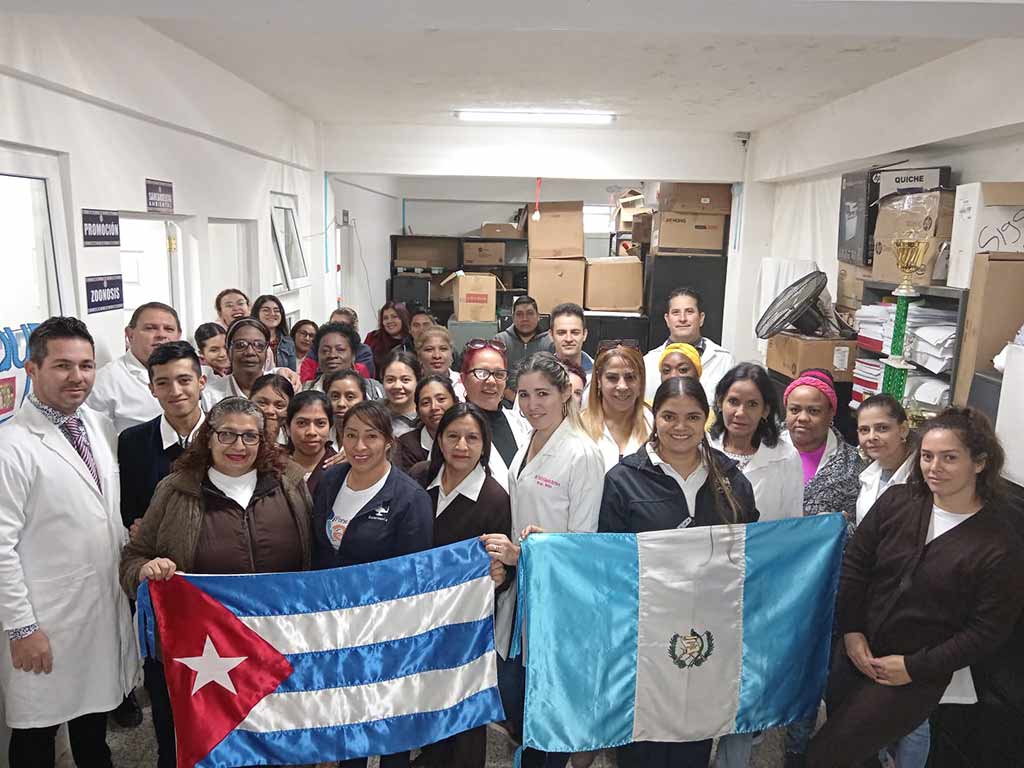November 5, 1998: A brigade of 19 aid workers arrives in Puerto San José, where they confront a cholera epidemic.
November 14, 1998: The second brigade of 31 medical collaborators arrives.
December 1998: Since then, teamwork has been developed with the Ministry of Health of Guatemala, which requests doctors according to their needs to support the work of the Comprehensive Healthcare System.
April 29, 1999: The Cuba-Guatemala Health Cooperation Agreement is signed. The terms of humanitarian aid are established and the Comprehensive Health Program begins.
2005: First graduation of 188 Guatemalan doctors from the Havana-based Latin American School of Medicine, founded in 1999. In total, there are 1,117 graduates, 43.4 percent specialists: 448 in Comprehensive General Medicine and 37 in other specialties.
2005: In response to the emergency caused by Hurricane Stan in October, 600 members of the Henry Reeve International Contingent arrive in Guatemala.
October 3, 2005: The first patients travel to Cuba as part of the Operation Miracle Program to confront one of the largest epidemics in Latin America: preventable blindness. In total, 1,444 Guatemalans were operated on.
Second semester of 2006: The first ophthalmological center is inaugurated in Guatemala.
2012: the Operation Miracle Program of free eye surgery is consolidated with the opening of several surgical centers.
October 2012: The Subsidiary Cooperation Agreement between the Ministry of Public Health and Social Assistance of Guatemala, and the Ministry of Public Health of Cuba is penned. The Operation Miracle Program is incorporated into the document.
November 7, 2012: Due to an earthquake, the Cuban Medical Brigade (BMC) joins the care of victims, in particular, in San Marcos.
August 5, 2013: The first 24 nurses arrive in Guatemala as part of the so-called Strengthening the first level of care of the Ministry of Public Health and Social Assistance of Guatemala project. It amounts to 146 that same year.
June 3, 2018: Emergency due to the eruption of Volcan de Fuego. The BMC of Escuintla was the first to join the care of the victims in that department, one of the most affected. Later, a Henry Reeve brigade was incorporated with doctors selected from different Guatemalan departments.
November 2020: Two Henry Reeve brigades move to the areas hardest hit by the impact of Tropical Storms Eta and Iota.
September 6, 2021: At the request of the Guatemalan Ministry of Health, a brigade of 20 doctors joins the fight against Covid-19 at the Parque de la Industria temporary hospital in the capital at the height of the disease due to a shortage of personnel.
December 2021: Guatemalan Minister of Health Francisco Coma and Cuban Ambassador María del Pilar Fernández Otero sign the update of the Subsidiary Healthcare Agreement between the two governments.
jg/mem/mmc









